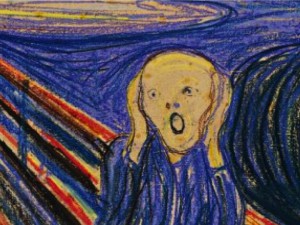
Post Herpetic Neuralgia (of the face)
This information is designed to help patients talk to their neurosurgeons about their facial pain. It is not intended to give specific treatment guidelines.
Introduction
There are many different pathologies that can cause pain in the region of the face. The most common causes are dental (e.g. sore tooth) and sinus pain (e.g. sinusitis). Our clinic has focused on the types of pains caused by neurological conditions. These include the following:
- trigeminal neuralgia
- post-herpetic neuralgia
- de-afferentation neuropathic pain
- cluster headache
- migraine
A more extensive list of the causes of facial pain includes the following:
- dental problems (e.g. cavities, tooth abcess, gum disease)
- skin problems (e.g. infections, trauma)
- muscle problems (e.g. deep infections, trauma, tumors)
- parotid gland problems (e.g. infection, stones)
- ear problems (e.g. infections)
- sinus problems (e.g. sinusitis, trauma, tumors)
- skull problems (e.g. infection, trauma, tumors)
- eye conditions (e.g. orbital infections or tumors)
- TMJ syndrome
- Neurological conditions (trigeminal neuralgia, post-herpetic neuralgia, nerve damage following dental misadventure or trauma, migraine, cluster headache)
Before you can begin treating a medical problem, you must understand its cause. This is true regardless of the medical condition but is absolutely crucial when dealing with facial pain. The perfect operation for trigeminal neuralgia will not help post-herpetic neuralgia. It is therefore vitally important that the first step in treating a facial pain condition is making the correct diagnosis.
Post-herpetic Neuralgia
Post-herpetic neuralgia (PHN) is caused by nerve damage following a bout of shingles. Usually the pain associated with the rash and skin blisters of shingles fades within a few weeks. If the pain continues after the rash has cleared (some say after 3 months) then the pain is called PHN. ‘Shingles’ is the lay term for a medical condition called herpes zoster. Shingles occurs when the chicken pox virus (varicella zoster) becomes activated for some reason after lying dormant in the body for many years. After a bout of chicken pox (usually as a child), the immune system clears the virus from the body but some continue to ‘live’ in nerve cells. No one knows why the virus can become active again decades later but the condition is much more common in those with a weaken immune system (e.g. the elderly). Since the virus is in a nerve cell, the resulting infection (shingles) typically follows the course of that nerve. The rash and blisters therefore occur in the dermatome of that nerve. For example, in the chest the rash follows the curve of the intercostal nerve as it hugs the ribs. In the face, the rash will follow one (or more) of the branches of the trigeminal nerve.
The incidence of PHN following shingles varies with age (more common if you are older) and with location (more common in the face). The pain is described as having two different qualities. The first is a constant burning that can vary in intensity but never goes away while awake. The second is an intermittent sharp or electrical pain that can be triggered by touch. Doctors should be careful to listen to the whole story of how the pain started and not just focus on the current condition. ‘Touch-induced electrical pain’ sounds a lot like trigeminal neuralgia. If you miss the fact that the pain began after a bout of shingles (not impossible if the pain began years ago) then you may incorrectly try to treat PHN as a case of trigeminal neuralgia.
The correct treatment of PHN will often require the ongoing care of a neurologist or pain specialist. There are a great many different treatments that can be tried (a sure sign that none of them have proven to be superior). A combination of topical creams to numb the area and systemic pills to down-regulate the nervous system will help the majority of patients. A few, however, will continue to be disabled by this chronic painful condition.
For those rare patients with pain that has continued for years despite adequate trials of all medications, surgery can be an option. If the pain is disabling the patient, then they deserve to understand the potential benefits and risks of surgery so that they can weigh the pros and cons of surgery against their current quality of life.
The Surgical Treatment of Facial PHN
The picture below is of a painting by Edvard Munch entitled “The Scream” (Der Schrei der Natur) and painted in 1893. It has come to be an iconic image of mankind’s anxiety and may represent how some patients with intractable pain come to feel when none of the medical therapies have worked for them.



















































